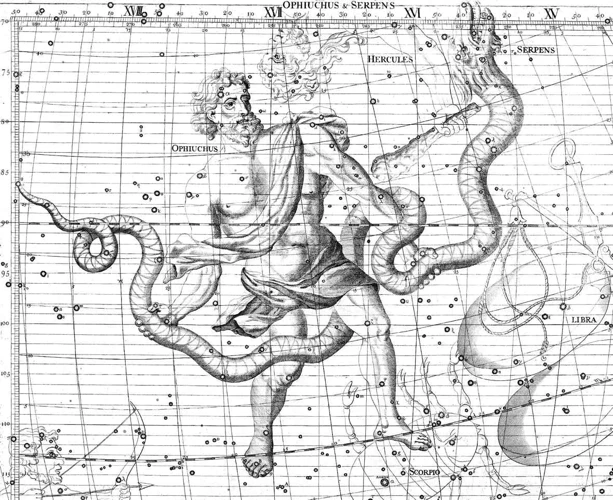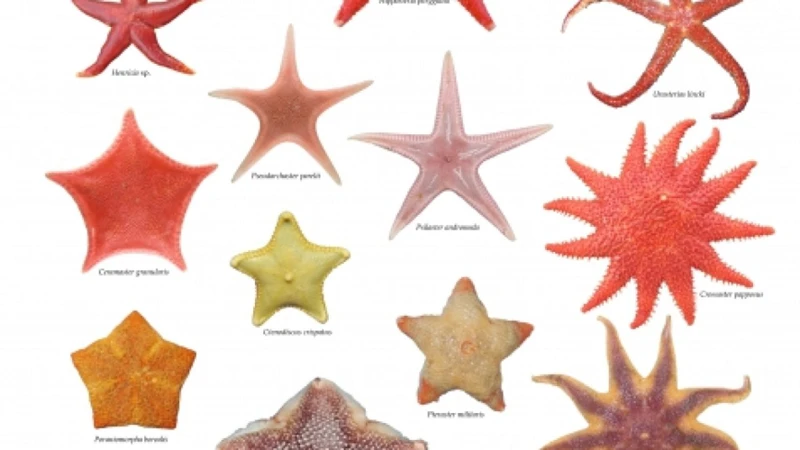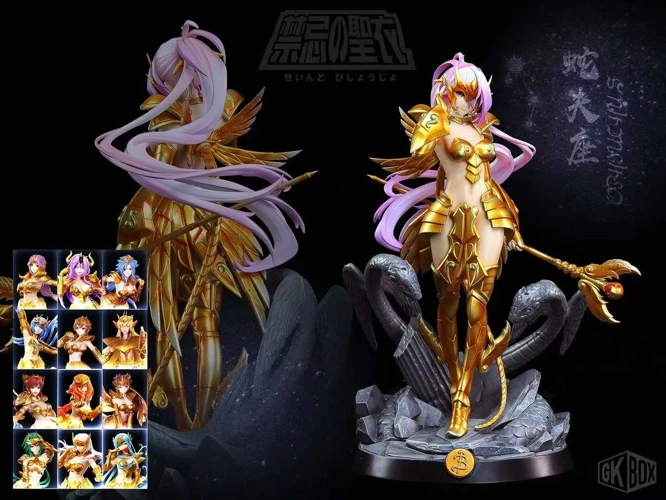In the heart of ancient Egypt lies a rich tapestry of folklore and mythology, filled with captivating tales of gods, goddesses, and mythical creatures. These legends have intrigued scholars and adventurers for centuries, offering a glimpse into a world where divine beings walked among mortals and enigmatic beasts roamed the land. From the terrifying Devourer of Souls to the enigmatic Sphinx, the creatures of Egyptian folklore are steeped in mystery and wonder. Join us on a journey as we uncover the secrets of these mythical beings and explore the unique roles they played in the ancient Egyptian pantheon. Prepare to be enthralled by the awe-inspiring power of Ra, the cunning wisdom of Anubis, and the majesty of the lioness goddess, Bastet. So, grab your Indiana Jones hat and let’s delve into the realm of Egyptian folklore!
Contents
- The Gods and Goddesses
- The Legendary Beasts
- Enigmatic Creatures of the Nile
- Conclusion
-
Frequently Asked Questions
- 1. Who is Ra and what is his significance in Egyptian mythology?
- 2. What is the role of Anubis in ancient Egyptian beliefs?
- 3. Who is Bastet and what does she represent in Egyptian folklore?
- 4. What is the significance of Horus in Egyptian mythology?
- 5. Who or what is Ammit, the Devourer of Souls?
- 6. What is the legend behind the Griffin, the Guardian of Treasures?
- 7. What makes the Sphinx the Enigmatic Guardian in Egyptian folklore?
- 8. Who is Taweret and what is her significance in Egyptian mythology?
- 9. What is the symbolism behind the Bennu, the Sacred Phoenix?
- 10. Who or what is the Serpopard, the Snake-Lion Hybrid?
- References
-
Frequently Asked Questions
- 1. What role did Ra and the Serpent Apep play in Egyptian mythology?
- 2. Why was Anubis associated with jackals?
- 3. What significance did the lioness hold in Egyptian folklore?
- 4. Why did the falcon symbolize Horus?
- 5. What was Ammit’s role in Egyptian mythology?
- 6. What treasures did the Griffin guard?
- 7. What role did the Sphinx play in Egyptian culture?
- 8. What qualities did the Qilin possess?
- 9. What role did Sobek play in Egyptian mythology?
- 10. What was the significance of Taweret in Ancient Egypt?
- References
- Read More
The Gods and Goddesses

In the realm of Egyptian folklore, the gods and goddesses hold sway over the mortal realm, embodying various aspects of nature and human existence. Ra, the sun god, rises each day to illuminate the world and vanquish the serpent Apep, symbolizing the eternal struggle between light and darkness. Anubis, the jackal-headed god, presides over the realm of the dead, guiding souls to the afterlife with unwavering wisdom and compassion. Bastet, the fierce lioness goddess, personifies the divine feminine and is revered as a protector of the pharaoh and guardian against evil. Horus, the falcon-headed god, symbolizes kingship and divine authority, his piercing eyes representing the watchful gaze upon his subjects. These gods and goddesses are not mere figures of myth, but powerful forces intricately woven into the fabric of Egyptian society and spirituality.
1. Ra and the Serpent Apep
Ra, the powerful sun god of ancient Egypt, was revered as the creator and sustainer of all life. However, his eternal journey across the sky was not without its challenges. Each night, as Ra descended into the underworld, he faced his greatest adversary, the serpent Apep. Apep, also known as Apophis, embodied chaos and destruction, seeking to swallow the sun and bring the world into eternal darkness. The battle between Ra and Apep was not merely physical but represented the cosmic struggle between order and chaos. Egyptian mythology depicts Ra’s solar barque being protected by various deities and magical spells as it traversed through the perilous underworld. Even though the serpent posed a formidable threat, Ra never faltered in his duty to ensure the dawn of a new day. The relentless conflict between Ra and Apep symbolizes the eternal cycle of life and death, light and darkness. It reminds us of the precarious balance that exists in the universe and the eternal struggle to maintain order and harmony. To learn more about the celestial manifestations of this struggle, see our article on the fascinating life cycle of stars and their connection to mythologies around the world.
2. Anubis and the Jackal
Anubis, the ancient Egyptian god associated with death and the afterlife, is often depicted as a canine figure with the head of a jackal symbolizing his connection to the wild and mysterious realms beyond. As the ruler of the necropolis and the patron of embalming, Anubis played a vital role in the mummification process and the journey of the soul into the afterlife. In Egyptian mythology, it was believed that Anubis weighed the hearts of the deceased against the feather of Ma’at, the goddess of truth and justice, to determine the fate of their souls. If the heart was found to be lighter than the feather, the individual would be deemed worthy and allowed to enter the blissful afterlife. However, if the heart was heavy with sin, it would be devoured by the devourer Ammit, forever denying the individual eternal peace. Anubis’ presence in funerary rites brought comfort to the living, as it ensured the proper preservation and protection of the deceased. This god’s role exemplifies the ancient Egyptians’ deep-rooted belief in the significance of death and the afterlife, as well as their desire for spiritual guidance and protection throughout the journey of the soul.
3. Bastet and the Lioness
Bastet, also known as Bast, is a prominent goddess in Egyptian mythology closely associated with the fierce and noble lioness. She embodies both the nurturing and protective aspects of motherhood. Often depicted as a lioness or as a woman with the head of a lioness, Bastet was revered as a guardian against evil and a bringer of joy and fertility. The lioness was a symbol of power and ferocity in ancient Egypt, qualities that Bastet embodied. People believed that she had the ability to ward off evil spirits and protect the pharaoh in battles. Temples dedicated to Bastet were scattered across Egypt, with her main cult center in the city of Bubastis. The city was known for its grand festivals in honor of the goddess, where thousands of pilgrims would gather to celebrate and partake in joyous processions. Artifacts and inscriptions found in these temples often depict Bastet with kittens, symbolizing her maternal nature and association with fertility. Bastet’s worship reached its peak during the 22nd Dynasty, and her influence extended far beyond Egypt’s borders, with her cult even spreading to other parts of the ancient world. The goddess Bastet holds a unique place in Egyptian folklore, exemplifying the power and grace of the lioness and the nurturing love of a mother.
4. Horus and the Falcon
Horus, the falcon-headed god, is a prominent figure in Egyptian mythology and holds a significant place in the pantheon. Son of Osiris and Isis, Horus represents kingship, divine authority, and protection. Often depicted with the head of a falcon and the body of a human, he is believed to possess the keen sight and swift flight of the majestic bird. Horus is closely associated with the sky, symbolizing its vastness and eternal nature. As the avenger of his father’s death at the hands of Set, Horus embodies the triumph of good over evil and justice over chaos. In ancient Egyptian society, pharaohs often identified themselves as the earthly incarnation of Horus, solidifying their own divine right to rule. His piercing falcon eyes are said to watch over the land and its people, providing guidance and protection. With a majestic presence and unwavering gaze, Horus represents the power and authority of the gods in Egyptian folklore.
The Legendary Beasts

In the enchanting realm of Egyptian folklore, there exists a pantheon of legendary beasts that capture the imagination and ignite a sense of wonder. Ammit, known as the Devourer of Souls, is a fearsome creature with the head of a crocodile, the body of a lion, and the hindquarters of a hippopotamus. This ominous being waits in the Hall of Ma’at, ready to devour the hearts of those deemed unworthy in the afterlife. The Griffin, a creature with the body of a lion and the head and wings of an eagle, serves as a guardian of treasures and a symbol of divine power. The Sphinx, a mystery shrouded in riddles, stands as an enigmatic guardian at the entrance of sacred sites, challenging travelers with its riddles of wisdom and knowledge. Lastly, the Qilin, a gentle herald with the body of a deer, the tail of an ox, and the hooves of a horse, brings good fortune and prosperity to those fortunate enough to encounter it. These legendary beasts are not only magnificent creatures but also embodiments of ancient beliefs and cultural significance, weaving themselves into the tapestry of Egyptian mythology.
1. Ammit, the Devourer of Souls
Ammit, known as the Devourer of Souls, is a fearsome creature from Egyptian mythology. In ancient Egyptian belief, when a person died, their heart would be weighed against the feather of Ma’at, the goddess of truth and justice. If the heart proved heavier than the feather, it meant the person had led an immoral life and would face eternal punishment. This is where Ammit played her role. With the body of a hippopotamus, the front legs of a lion, and the hindquarters of a crocodile, Ammit stood ready to consume the hearts of the unworthy. She lurked near the scales of judgment, eagerly awaiting those deemed unworthy of the afterlife. The mere sight of Ammit struck fear into the hearts of ancient Egyptians, serving as a reminder of the consequences of a sinful life. The belief in Ammit served as a moral compass, urging individuals to live a righteous and virtuous existence to ensure their place in the afterlife.
2. Griffin, the Guardian of Treasures
The Griffin is a legendary creature that plays a significant role in Egyptian folklore as the guardian of treasures. Depicted as a hybrid creature with the body of a lion and the head and wings of an eagle, the Griffin is known for its majestic appearance and formidable presence. In Egyptian mythology, it is believed that the Griffin possessed the ability to protect valuable treasures, making it a sought-after symbol of wealth and prosperity. It was said to possess extraordinary strength and keen intelligence, making it a formidable opponent for anyone who dared to approach its treasures. The Griffin’s role as a guardian of treasures highlights the importance of protecting and preserving valuable possessions in Egyptian culture. Whether carved into hieroglyphic inscriptions or adorning the walls of ancient tombs, the image of the Griffin stands as a powerful reminder of the significance of wealth and the need to safeguard it.
3. Sphinx, the Enigmatic Guardian
The Sphinx, known as the enigmatic guardian of ancient Egypt, is a creature of great fascination and mystery. This majestic creature has the body of a lion and the head of a human or a ram. It is believed to have been built during the reign of Pharaoh Khafre as a symbol of his divine authority and wisdom. The most famous Sphinx, located in Giza near the Great Pyramids, stands at a towering height of 66 feet and measures an impressive 240 feet in length. The purpose of the Sphinx, however, continues to baffle historians and archaeologists. Some speculate that it served as a protective deity, guarding the tombs and temples from evil spirits and malevolent forces. Others suggest that it was a representation of the pharaoh as the embodiment of the sun god Ra. Regardless of its purpose, the Sphinx has captivated the imaginations of countless generations, inspiring tales of riddles and prophecies. Its stoic expression and timeless allure continue to beckon visitors from around the world, inviting them to ponder the secrets that lie within its weathered and timeless stone form.
4. Qilin, the Gentle Herald
Qilin, known as the Gentle Herald, is a mythical creature from Egyptian folklore that symbolizes good fortune, prosperity, and tranquility. This majestic creature is often depicted as a dragon-like beast with the body of a deer or horse, adorned with scales and a single horn on its head. Qilin’s gentle nature is reflected in its behavior, as it is said to avoid stepping on any living creature, even plants. It is believed that encountering a Qilin brings great blessings and signifies the arrival of a wise and just ruler. With its serene presence, Qilin is regarded as a bringer of peace and harmony. Its appearance is often associated with auspicious events and the flourishing of a prosperous era. In Egyptian mythology, Qilin is revered as a celestial being that manifests during times of harmony and balance. Legends and tales of the Qilin have been passed down through generations, continuing to captivate the imagination and evoke a sense of wonder.
Enigmatic Creatures of the Nile

The Nile River, the lifeblood of ancient Egypt, teems with a diverse array of enigmatic creatures that inspire both fear and reverence. Sobek, the crocodile god, is a formidable deity associated with the Nile’s treacherous waters. With the head of a crocodile and the body of a human, Sobek embodies the power and danger lurking beneath the surface. Taweret, the hippopotamus goddess, is a fearsome protector of pregnant women and childbirth. With her fearsome features and protective nature, Taweret commands respect and awe. Bennu, the sacred phoenix, is a symbol of rebirth and regeneration, rising from its own ashes and signaling new beginnings. Lastly, the serpopard, a majestic hybrid creature with the body of a leopard and the long neck of a serpent, represents the duality of predator and prey, blending grace and strength into a mythical being that captivates the imagination. These creatures of the Nile play a significant role in Egyptian folklore, each holding a unique place in the tapestry of ancient myth and mysticism.
1. Sobek, the Crocodile God
Sobek, the Crocodile God, holds a unique and formidable position in Egyptian mythology. Depicted as a man with the head of a crocodile, Sobek is associated with the Nile River, a lifeline for the ancient Egyptians. Revered as a powerful deity, Sobek was both feared and respected. His ferocity and strength are often symbolized by the presence of crocodiles in the Nile, representing the danger and unpredictability of the river. Pharaohs sought Sobek’s protection and invoked his power in battles, believing that he could grant them victory. In temples dedicated to Sobek, rituals and offerings were conducted to honor and appease the crocodile god. As an emblem of fertility, Sobek played a significant role in agricultural practices, believed to ensure a bountiful harvest. This god’s association with the Nile and its inhabitants showcases the intricate relationship between nature, mythology, and daily life in ancient Egypt.
2. Taweret, the Hippopotamus Goddess
Taweret, the Hippopotamus Goddess, stands as a unique figure in Egyptian mythology. Depicted as a fearsome combination of a hippopotamus, lion, and crocodile, Taweret represents both fertility and protection. She is often depicted with a rounded belly and pendulous breasts, symbolizing her role as a guardian of childbirth and motherhood. Despite her fearsome appearance, Taweret is believed to be a benevolent deity, warding off evil spirits and providing safety to those in need. Worshipped particularly by women and expectant mothers, Taweret was called upon during childbirth to ensure a safe delivery. Her presence can be seen in various aspects of Egyptian life, such as protective amulets and carved statues found in homes. Taweret also played a vital role in the annual flooding of the Nile, as her presence was believed to calm the potentially destructive waters. This goddess reminds us of the intricate relationship ancient Egyptians had with the natural world and the importance they placed on the cycles of life and fertility.
3. Bennu, the Sacred Phoenix
Bennu, the Sacred Phoenix, is a mythical creature deeply rooted in Egyptian folklore. This majestic bird is associated with the sun, creation, and rebirth. According to ancient beliefs, Bennu symbolized the eternal cycle of life, death, and resurrection. It was believed that the phoenix would undergo a transformation by immolating itself in flames and then rising from its own ashes, representing the continuous cycle of death and rebirth. The Bennu bird is often depicted with vibrant plumage and a radiant crown, resembling the sun itself. Its association with the sun god Ra further reinforces its significance in Egyptian mythology. The Bennu was seen as a divine messenger, linked to the rising and setting of the sun, and its appearance was considered a sign of good fortune and new beginnings. This mythical creature has left an indelible mark on Egyptian culture, inspiring awe and reverence for the cycles of life and the enigmatic nature of the universe.
4. Serpopard, the Snake-Lion Hybrid
The Serpopard is among the most fascinating and enigmatic creatures in Egyptian folklore. It is a mythical being that combines the features of a serpent and a lion, creating a captivating hybrid. The Serpopard is depicted as having the body of a long, sinuous serpent with the head and neck of a powerful lion. This fantastical creature represents the merging of both land and water, symbolizing the duality and interconnectedness of different aspects of nature. In Egyptian mythology, the Serpopard is associated with protection and guardianship, often seen as a fierce defender of divine and royal figures. Its regal and awe-inspiring presence is showcased in various ancient artworks and sculptures, with the creature’s elongated body coiling around temples and pyramids. The Serpopard embodies both the ferocity and grace of its feline and reptilian counterparts, making it a truly mesmerizing figure within Egyptian folklore. It serves as a reminder of the mysterious and mystical nature of the ancient Egyptian world, where mythical beings roamed the imaginations of the people, leaving behind a rich legacy of art and stories.
Conclusion

In conclusion, the mythical creatures in Egyptian folklore offer a fascinating insight into the ancient civilization’s beliefs and worldview. Through their stories and symbolism, these creatures played significant roles in the religious and cultural practices of the time. From the gods and goddesses like Ra, Anubis, Bastet, and Horus, who embodied various aspects of nature and human existence, to the legendary beasts such as Ammit, Griffin, Sphinx, and Qilin, who guarded treasures and posed riddles, every creature had its unique place in the Egyptian pantheon. Additionally, the enigmatic creatures of the Nile like Sobek, Taweret, Bennu, and Serpopard further enriched the mythological landscape with their connections to the powerful forces of nature. Their presence in ancient Egyptian art, literature, and religious ceremonies is a testament to the importance and reverence placed upon these mythical beings. By exploring the tales of these creatures, we gain a deeper understanding of the beliefs, values, and complex mythology that shaped the civilization of ancient Egypt. Although the sands of time may have obscured some details, the enchanting world of Egyptian folklore will continue to captivate our imaginations and inspire further exploration.
Frequently Asked Questions

1. Who is Ra and what is his significance in Egyptian mythology?
Ra is the powerful sun god in Egyptian mythology. He is depicted as a falcon-headed deity and is considered the creator and ruler of the world. Ra’s journey across the sky represents the cycle of life, death, and rebirth, and his battle against the serpent Apep symbolizes the perpetual struggle between order and chaos.
2. What is the role of Anubis in ancient Egyptian beliefs?
Anubis is the god associated with mummification and the afterlife. Often depicted with a jackal head, Anubis was believed to guide and protect the souls of the deceased on their journey to the underworld. He also played a crucial role in the preservation and preparation of bodies for burial.
3. Who is Bastet and what does she represent in Egyptian folklore?
Bastet is the goddess of home, fertility, and protection. She is often depicted as a lioness or a woman with a lioness head. Bastet was highly revered, particularly by women, and her presence was believed to bring good fortune, joy, and protection against evil spirits.
4. What is the significance of Horus in Egyptian mythology?
Horus is one of the most important Egyptian deities and is closely associated with kingship and divine protection. He is represented as a falcon or as a man with a falcon head. Horus was believed to be the son of Osiris and Isis, and his role was to uphold order, rule over Egypt, and protect the pharaoh.
5. Who or what is Ammit, the Devourer of Souls?
Ammit is a fearsome creature with the head of a crocodile, the front body of a lion, and the hindquarters of a hippopotamus. In Egyptian belief, after death, the heart of the deceased is weighed against the feather of Ma’at. Should the heart prove heavy with sin, Ammit would consume it, preventing the soul from reaching the afterlife.
6. What is the legend behind the Griffin, the Guardian of Treasures?
The Griffin is a legendary creature with the body of a lion and the head and wings of an eagle. It was believed to guard precious treasures and was associated with divine power and protection. According to ancient Egyptian tales, the Griffin was often depicted as a companion of the sun god Ra.
7. What makes the Sphinx the Enigmatic Guardian in Egyptian folklore?
The Sphinx is a mythical creature with the body of a lion and the head of a human or a ram. It has long been associated with mystery and wisdom. The most famous representation of the Sphinx is the Great Sphinx of Giza, which is believed to guard the pyramids and possesses an inscrutable riddle, testing the wisdom of those who dare to approach.
8. Who is Taweret and what is her significance in Egyptian mythology?
Taweret is the goddess of fertility and childbirth, often depicted as a pregnant hippopotamus standing on her hind legs. She was believed to protect pregnant women and ensure safe childbirth. Taweret was considered a benevolent deity who could ward off evil and bring blessings to households.
9. What is the symbolism behind the Bennu, the Sacred Phoenix?
The Bennu is a mythical bird associated with the sun, creation, and rebirth. It is often depicted as a heron or a stork with colorful plumage. The Bennu is thought to represent the eternal cycle of life, as it was believed to die in flames and then rise again from its own ashes, symbolizing renewal and resurrection.
10. Who or what is the Serpopard, the Snake-Lion Hybrid?
The Serpopard is a creature with the long neck and body of a serpent and the head of a lion. It is a mythical hybrid often associated with royalty and leadership. The Serpopard was believed to possess regal qualities and can be found represented in Egyptian art, particularly in decorative motifs and royal iconography.
References
- 12 Fascinating Ancient Egyptian Mythological Creatures
- Monsters and Mythical Creatures of Ancient Egypt
Frequently Asked Questions

1. What role did Ra and the Serpent Apep play in Egyptian mythology?
Ra was the sun god in Egyptian mythology, and Apep was his arch-nemesis. Apep was a giant serpent who aimed to swallow the sun each day, causing darkness and chaos. Ra had to fight Apep every night to ensure the sun would rise again. This eternal battle symbolized the struggle between good and evil.
2. Why was Anubis associated with jackals?
Anubis was the god of embalming and the afterlife. He was often depicted with the head of a jackal, as jackals were commonly seen scavenging near tombs. Egyptians believed that Anubis guided the souls of the deceased through the underworld, making him an important protector of the dead.
3. What significance did the lioness hold in Egyptian folklore?
Bastet, the goddess of home, fertility, and protection, was closely associated with the lioness. Lions were revered for their strength and hunting prowess, and Bastet was often depicted with the body of a lioness or as a lioness herself. She was believed to bring both protection and good fortune to her worshippers.
4. Why did the falcon symbolize Horus?
Horus, the god of the sky and kingship, was typically depicted with the head of a falcon. Falcons were known for their keen eyesight and swift flight, symbolizing Horus’ ability to see all and swiftly protect his followers. Horus was also believed to have the sun and moon as his eyes.
5. What was Ammit’s role in Egyptian mythology?
Ammit, often referred to as the “Devourer of Souls,” played a crucial role in the afterlife. Egyptians believed that after death, the heart of the deceased would be weighed against the feather of Ma’at, the goddess of truth. If the heart was heavy with sin, Ammit would devour it, preventing the soul from reaching the afterlife.
6. What treasures did the Griffin guard?
The Griffin was a legendary creature with the body of a lion and the head and wings of an eagle. According to Egyptian mythology, the Griffin was a guardian of treasures and riches, both in the earthly realm and the afterlife. It was believed that only the most deserving individuals could pass by the Griffin and claim the treasures it protected.
7. What role did the Sphinx play in Egyptian culture?
The Sphinx was an enigmatic creature with the body of a lion and the head of a human or a ram. It was revered as a guardian and a symbol of wisdom. The most famous Sphinx, located near the Great Pyramids of Giza, is believed to represent the pharaoh Khafre. Egyptians associated the Sphinx with the sun god and believed it safeguarded sacred places and hidden knowledge.
8. What qualities did the Qilin possess?
The Qilin, a mythical creature originating from Chinese mythology, was also revered in ancient Egypt. It had the body of a deer, the tail of an ox, and the hooves of a horse. In Egyptian folklore, the Qilin was seen as a gentle and benevolent creature that brought good news and prosperity. It was often associated with fertility and heralded the birth of significant figures.
9. What role did Sobek play in Egyptian mythology?
Sobek was the Egyptian god of fertility, the army, and crocodiles. He was often depicted as a man with the head of a crocodile or as a crocodile itself. Egyptians believed that Sobek controlled the Nile River’s flooding, which brought fertility to the land. Sobek was also seen as a powerful protector and a god associated with military prowess.
10. What was the significance of Taweret in Ancient Egypt?
Taweret was a goddess in Egyptian mythology, often depicted as a hippopotamus with the tail of a crocodile and the arms and legs of a lion. She was a protective deity associated with childbirth and fertility. Egyptians believed that Taweret guarded women during pregnancy and protected newborns from evil spirits.







